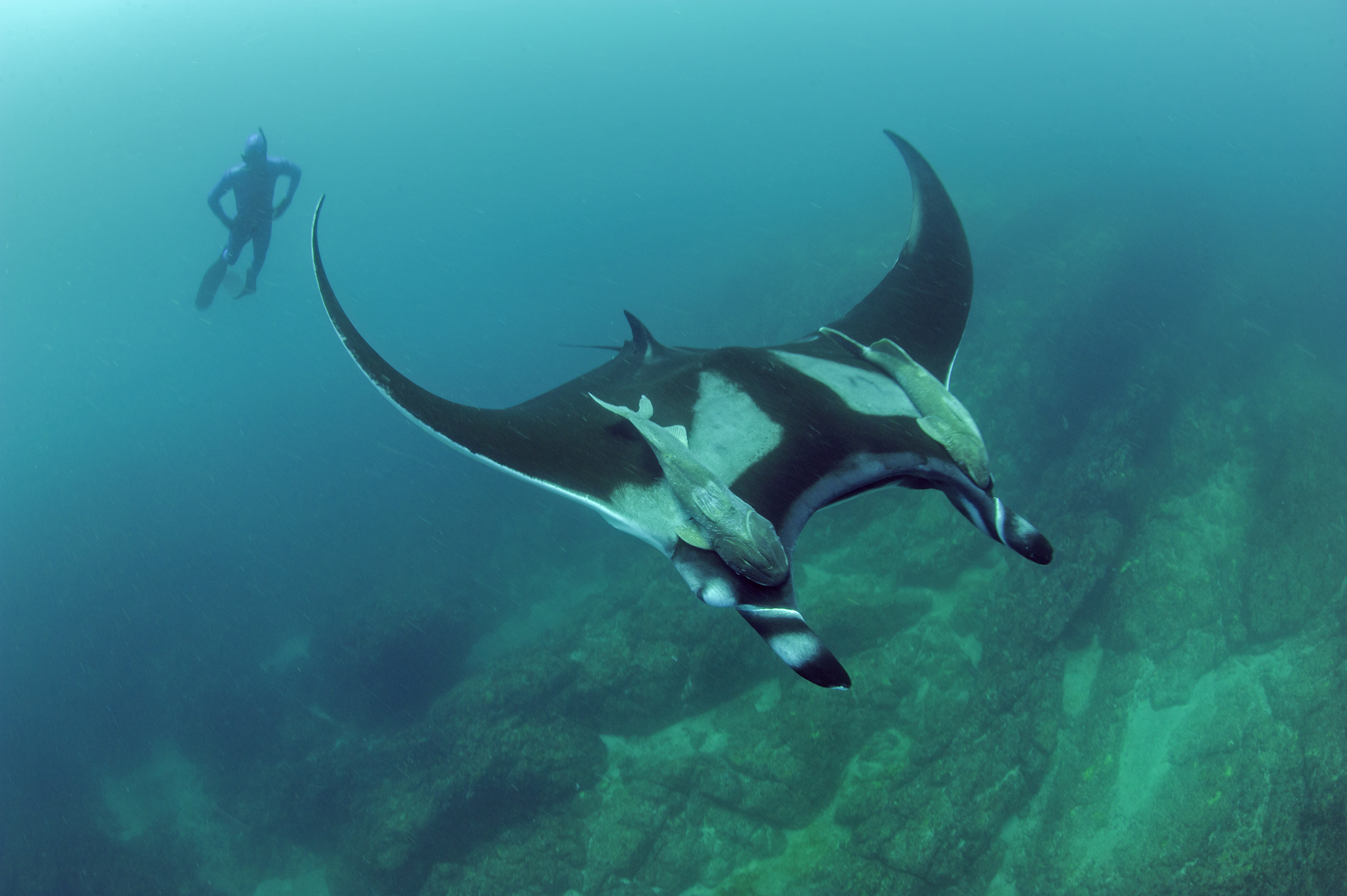Keywords:
Listening for Mantas.

Imagine you’re in a water taxi, speeding along the lush southern coast of Bahia de Banderas in Mexico. Maybe you’re visiting to experience the rich marine ecosystems that the bay has to offer, and you’re on your way out to a quiet little village with a famous snorkeling spot out front. With no warning a giant black shadow appears in the water in front of the boat, the captain has no time to turn, and the boat collides with what turns out to be an enormous, 16-foot-wide manta ray. The manta quickly dives, leaving a plume of blood behind from the giant propeller gouges in its back. Maybe it will survive, maybe it won’t. While our little story here might sound overly dramatic, this sort of collision, or boat strike, is not so uncommon in Bahia de Banderas, and is one of the main local threats that manta rays face here.

The good news is that nobody wants these boat strikes to happen. They’re bad for the mantas, of course, but they’re also bad for boats and engines, which are expensive to repair. So how can we reduce or eliminate the manta-related collisions that happen within the bay? First we need to know when mantas are present in the bay, and then we need to know why they’re around so we can predict their presence in the future. These questions about the movements of manta rays in Pacific Mexico are a fundamental part of Proyecto Manta, and previously we have investigated the large-scale movements of manta rays throughout the region. In this article, however, we cover much finer scale movements of the mantas to identify exactly when they are present in a specific location, using a technique called acoustic telemetry.
Acoustic tags send out an ultrasonic, coded signal that is unique to each tag. This means that we can put an acoustic tag on a manta and listen for that unique signal to tell us whether our manta was around or not at a given time. To pick up these ultrasonic frequencies we need to deploy listening stations, called acoustic receivers. These receivers are anchored to the sea floor and record the unique tag signals each time a manta swims into a receiver’s detection radius of about 1km. The benefit of acoustic tagging is that we know exactly when and where a manta is within the network of acoustic receivers. The limitations are that our ability to detect mantas is only as good as the coverage of receivers—think of it like a cell phone network with area of no signal / coverage; and we don’t know where a manta has gone if it’s not recorded by the receivers. It could be in the middle of the bay where we have no receivers, or 100 miles down the coast. Nonetheless, if we position acoustic receivers in areas of interest, such as sites with a high risk of boat strikes, we can identify exactly when tagged mantas are present and start to develop mitigation strategies. After recording the presence of mantas and their movement patterns in Bahia de Bandera for several years, our objective is to identify patterns of visitation and residency that will help reduce boat strikes and other impacts, such as entanglement in fishing gear, on the manta population.
Below you can explore six months of acoustic tagging data. For most of the tagged mantas, you’ll find images of the unique spot patterns that allow us to distinguish individuals. Which sites did these mantas visit (La Canilla, Chimo, Yelapa and Los Arcos Wall)? How often were they there, and when were they gone? Which site had the most mantas visit, and when were the greatest number of mantas present? Explore the data below to find out!
Major Findings:
Using acoustic tagging methods allows us to study the fine-scale movements of manta rays in Bahia de Banderas, Mexico. Mantas tagged in February and March, 2015 were not recorded during the summer months, suggesting they may leave the bay during this period. Summer months are also the low-season for tourism and boat traffic along the south coast of the bay, so this reduction in manta presence does not necessarily provide a benefit in reducing boat strikes. We found clear gaps where mantas were not present (e.g. March 3-12), although without additional receiver coverage it is not possible to say whether these mantas were hundreds of miles away or just out of range of the receivers. Shifts in site use (e.g. April 10-22) may be explained by environmental factors, but will require additional research to reveal patterns and correlations.
Authors:
Joshua Stewart*; Alfredo Giron*; Robert Rubin**; Katherine R. Kumli**; James Ketchum***; Antonio Ruiz†; Aldo Zavala‡; Iliana Fonseca‡; Ramiro Gallardo‡
Contact Information:
DOI:
10.13022/M3QC7B
Affiliations:
*Scripps Institution of Oceanography; **Pacific Manta Research Group; ***Pelagios Kakunja; † Universidad Autonoma de Baja California Sur; ‡ Instituto Tecnologico de Bahia de Banderas.
Acknowledgements:
This project was conducted by Proyecto Manta, Pacific Manta Research Group, and Pelagios Kakunja. Funding was provided by Walter and Mary Munk, Patty and Rick Elkus, and David Connell.
How to cite this story:
Joshua Stewart; Alfredo Giron; Robert Rubin; Katherine R. Kumli; James Ketchum; Antonio Ruiz; Aldo Zavala; Iliana Fonseca; Ramiro Gallardo (2015): Listening for Mantas. DataMares. InteractiveResource. http://dx.doi.org/10.13022/M3QC7B

